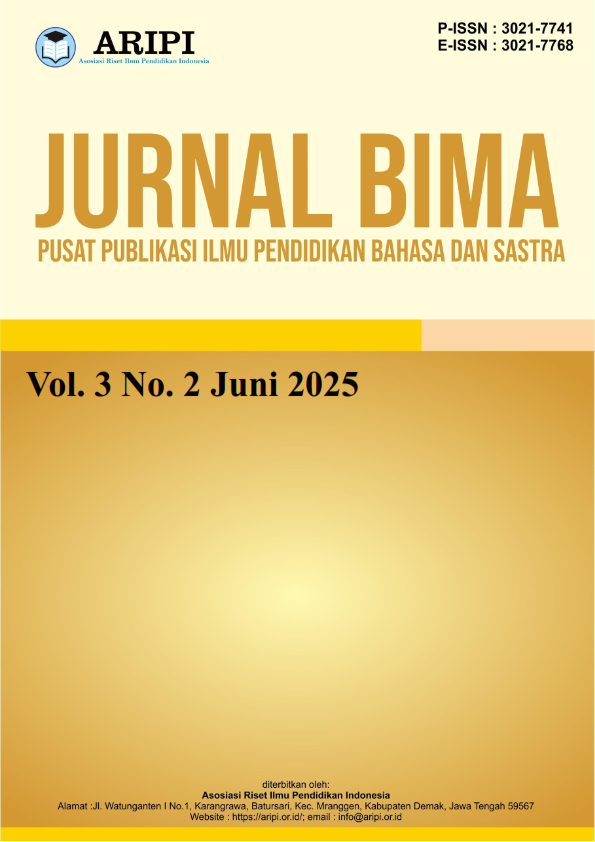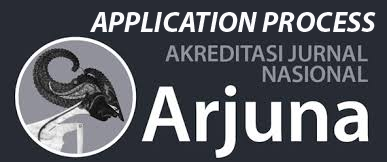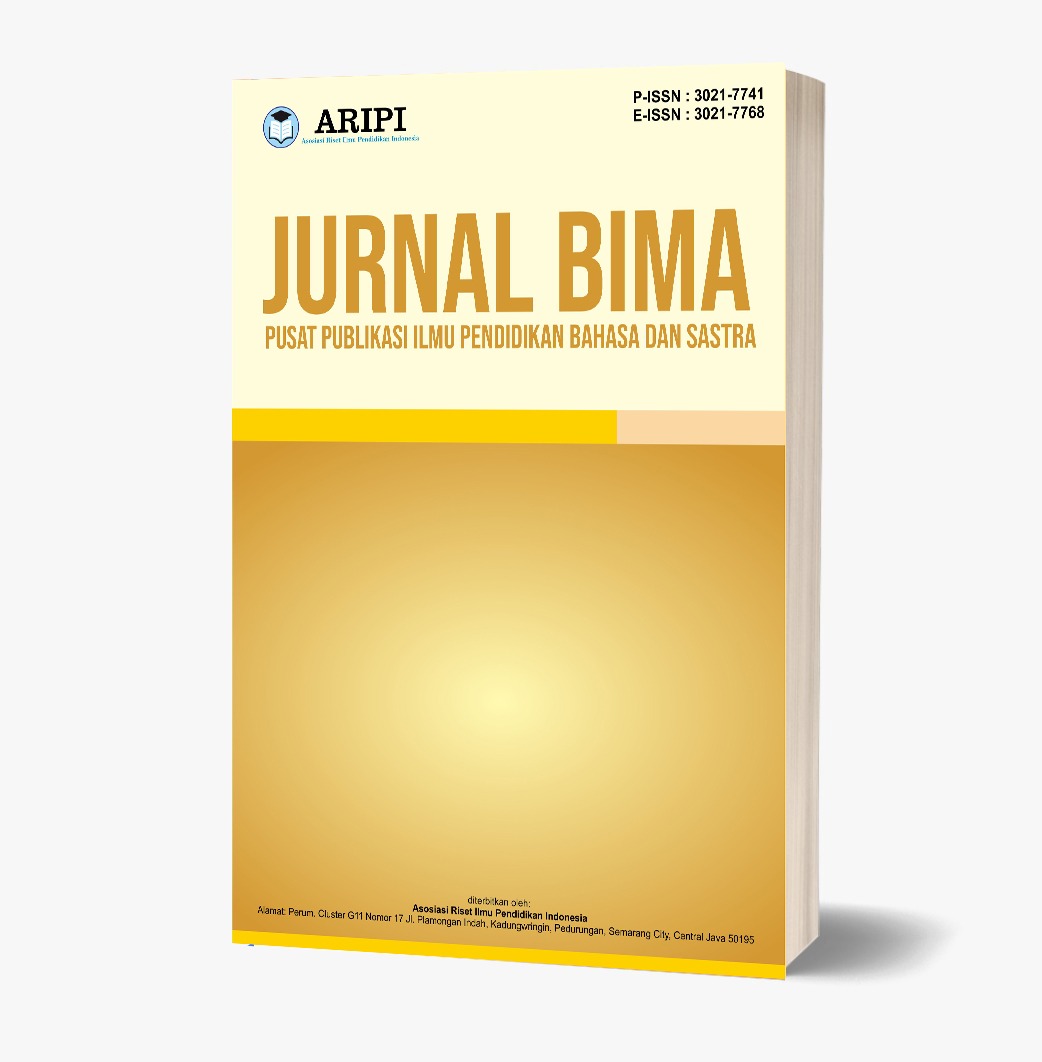Struktur Kebahasaan Bahasa Indonesia sebagai Rujukan Penggunaan Bahasa (Morfologi)
DOI:
https://doi.org/10.61132/bima.v3i2.1745Keywords:
Affixation, Linguistic Structure, Morpheme, Morphology, ReduplicationAbstract
This article discusses the linguistic structure of Indonesian with an emphasis on the importance of morphology as one of the main aspects in learning and understanding language. Morphology, as a branch of linguistics, studies the internal structure of words and the process of their formation through affixation, reduplication, and composition. This study aims to analyze the types of morphemes—including free, bound, derivational, and inflectional morphemes—and to understand the morphological process and grammatical classes in Indonesian systematically. Through this study, it is also explained how affixation (prefix, suffix, infix, and confix), reduplication in various forms, and compound word composition play a role in forming meaning. This study highlights the importance of morphology in language teaching, communication, and development, and emphasizes that understanding morphological structure will improve language skills accurately and effectively, both in formal and informal contexts, and strengthen the sense of familiarity and awareness of the richness of Indonesian.
Downloads
References
A, W. W. (2018). Bahasa Indonesia Bahasa Indonesia. Jurnal Keperawatan Malang, 1(1), 1–104. https://doi.org/10.36916/jkm.v1i1.45
Apriliyani, D. R., & Rosyidi, R. (2020). Pemerolehan morfem derivatif pada anak usia dini. Bahasa dan Sastra: Jurnal Bahasa, Sastra, dan Pengajarannya, 7(2), 144–153. https://doi.org/10.21009/bahasa_sastra.072.03
Laurensia Nddraha, L., Lase, J. H., Giawa, P. P. C., & Halawa, N. (2023). Analisis morfem bebas pada cerpen “Antologi Cinta.” Indonesia Journal of Teaching and Learning, 2(3), 401–409.
Loe, E. E. Y. (2017). Reduplikasi bahasa Rote dialek Dengka: Kajian morfologi generatif (Reduplication in Dengka dialect of Rote language: Generative morphology approach). Mozaik Humaniora, 17(1), 26–44.
Mulyani, N. (2021). Kajian morfem terikat dan bebas dalam teks prosedur. Jurnal Pendidikan Bahasa dan Sastra Indonesia, 11(1), 55–62. https://doi.org/10.23887/jpbs.v11i1.35529
Purnanto, D. (2015). Kajian morfologi derivasional dan infleksional dalam bahasa Indonesia. Kajian Linguistik dan Sastra, 18(2), 136–152. https://doi.org/10.23917/kls.v18i2.5058
Putra, Y. A., & Marlina, L. (2022). Morfologi kata berimbuhan dalam artikel ilmiah mahasiswa. Jurnal Ilmiah Bahtera Bahasa dan Sastra, 21(1), 70–81.
Reni Rokhayati, R., Nafilah, I., & Aguatin, Y. (2023). Morfem terikat pada buku cerita rakyat Nusantara 34 provinsi. Protasis: Jurnal Bahasa, Sastra, Budaya, dan Pengajarannya, 2(2), 148–161. https://doi.org/10.55606/protasis.v2i2.119
Sari, E. (2024). Penghantar morfologi bahasa Indonesia: Bentuk, hakikat, dan objek. Pustaka Mandiri.
Sibarani, R. (2002). Morfologi: Bentuk, struktur, dan makna kata. Penerbit Djambatan.
Siregar, A. (2019). Pemerolehan morfem pada anak usia dini di lingkungan bilingual. Jurnal Bahasa dan Sastra Indonesia, 9(1), 22–30.
Timung, M. M. (2020). Reduplikasi bahasa Flores. Jurnal Bahasa dan Sastra, 5(3), 38–51.
Wahyuni, S. (2021). Morfem dalam iklan layanan masyarakat di televisi. Jurnal Pendidikan dan Kajian Linguistik, 3(1), 17–28.
Widia, Y. A. (2016). Pemerolehan kosakata anak tunarungu berdasarkan kelas kata bahasa Indonesia di SDLB Karya Mulia II Surabaya: Kajian psikolinguistik. Skriptorium, 1(2), 129–142. https://repository.unair.ac.id/27155/
Yusuf, M., & Ayuningtyas, H. (2023). Analisis morfem pada wacana berita daring. Jurnal Kajian Bahasa dan Sastra, 8(2), 89–98.
Downloads
Published
How to Cite
Issue
Section
License
Copyright (c) 2025 Jurnal Bima : Pusat Publikasi Ilmu Pendidikan Bahasa dan Sastra

This work is licensed under a Creative Commons Attribution-ShareAlike 4.0 International License.







